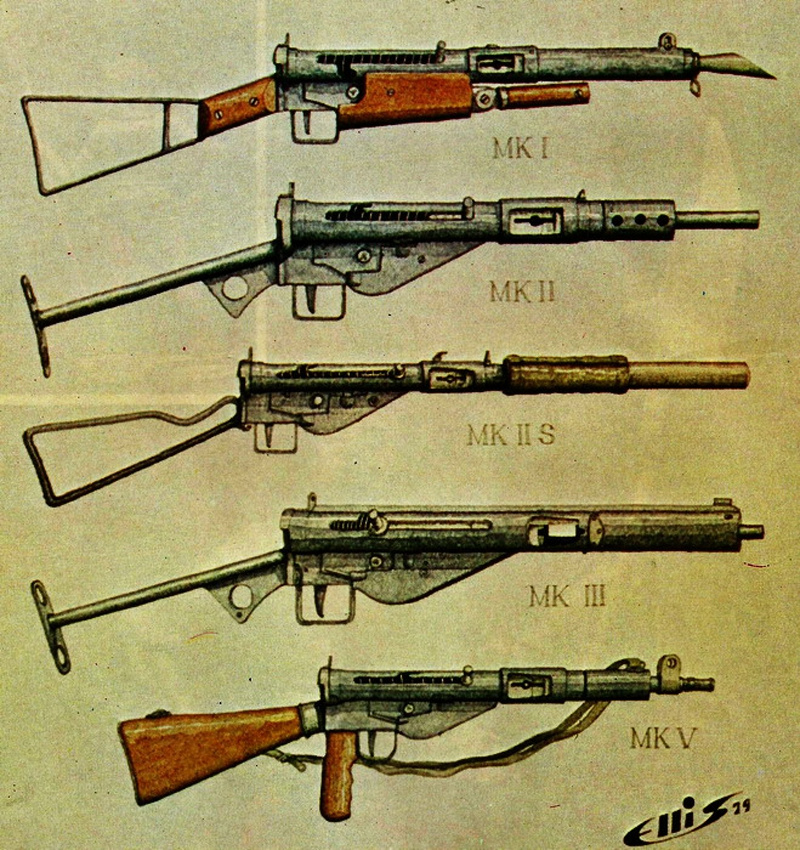
Operation Dynamo, the miraculous rescue of Allied forces from Dunkirk in 1940, was the most successful military evacuation in human history. Over nine short days and against all odds, Royal Navy vessels supplemented by countless smaller civilian craft removed some 338,226 Allied soldiers to safety in Great Britain.
It was the timely evacuation of the British Expeditionary Force from the continent that helped dissuade Hitler from launching Operation Sea Lion, his proposed invasion of the British Isles. While the British Army arrived in England relatively intact, they lost most of their weapons in France.
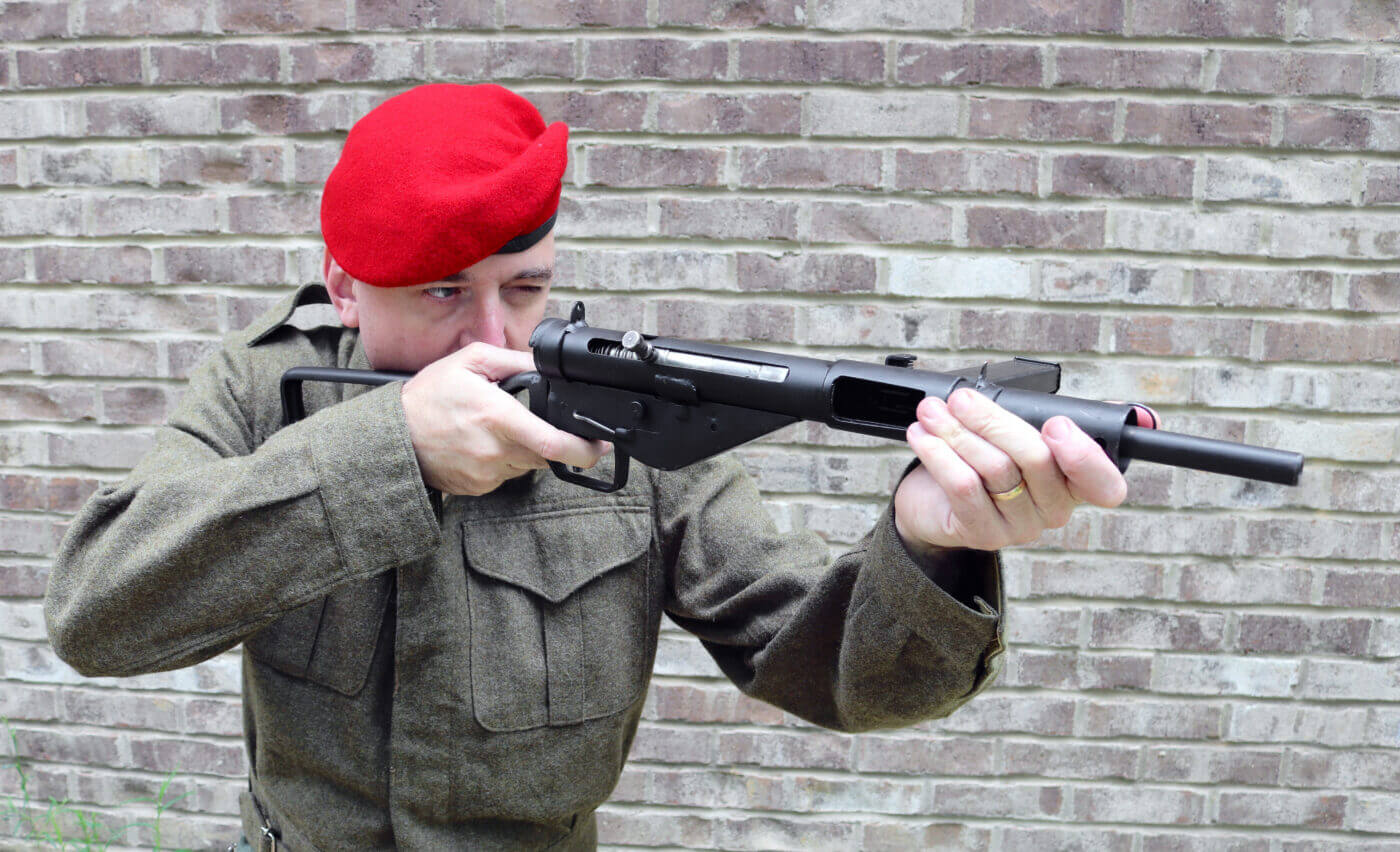
The solution to this existential crisis was the Sten gun. The word Sten was a portmanteau combining the last names of the gun’s designers, Major Reginald Shepherd and Harold Turpin, along with EN for the Enfield factory where it was designed. In its simplest form the Sten gun had a mere 59 parts and cost $10 to build ($160 today, or about one seventh the cost of a wartime Thompson).
The Sten was ultimately produced in six different Marks encompassing seven different major variants. All Sten guns were formed as cheaply as possible from stamped steel components and fed from the left via a double column, single feed 32-round magazine. The Sten was an open-bolt design that fired via advanced primer ignition at a sedate cyclic rate of around 500 rpm.
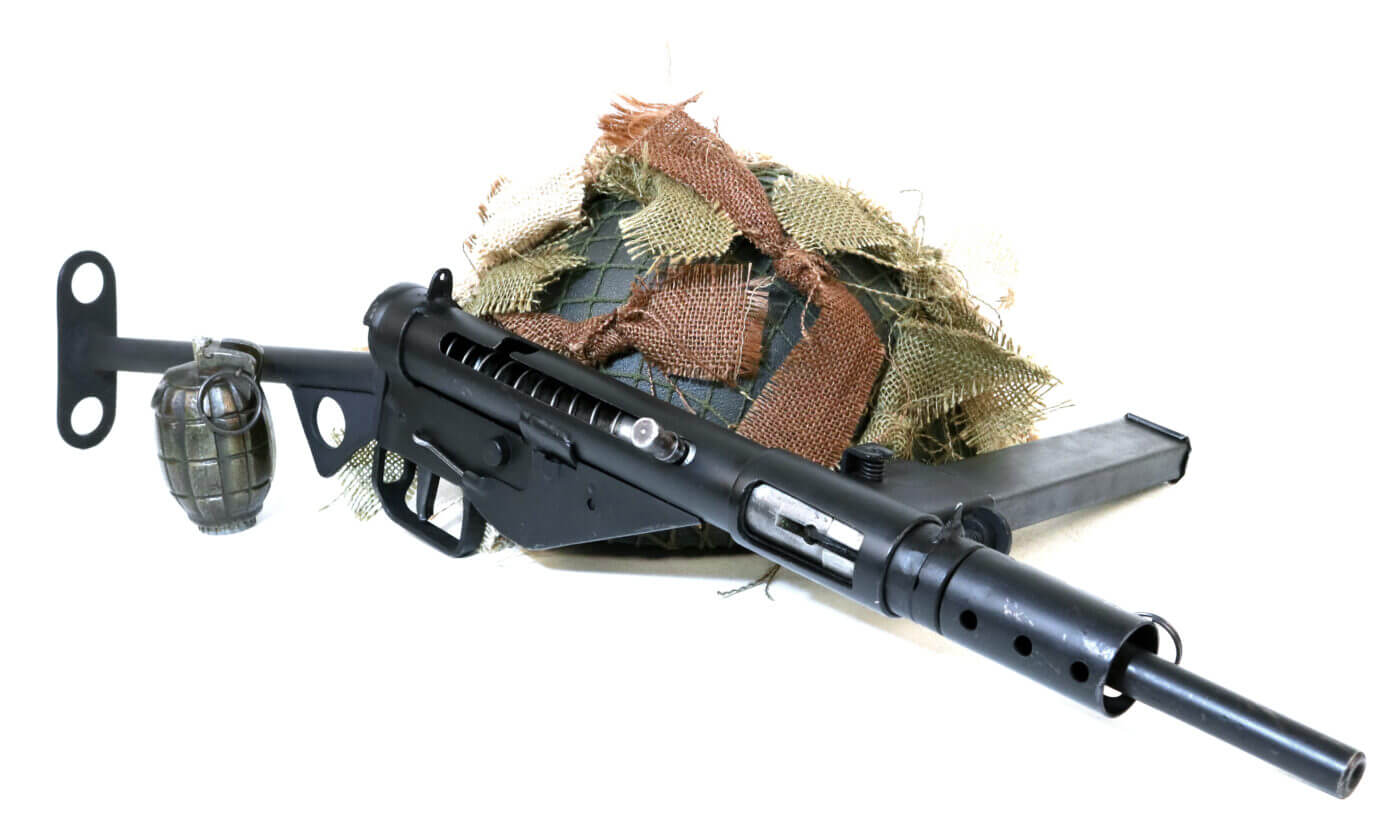
The gun weighed a bit more than 7 lbs. Sights were fixed and steel, both front and rear. How straight the gun shot was a function of how conscientious the welder was on the day the gun was built. Five million copies were made at nine different production facilities.
The Details
The different Marks of the Sten gun were generally driven by their relative austerity. The Mk II was one of the most prevalent versions and included such niceties as a rotating magazine well that could be turned to occlude the ejection port for storage in dirty environments. All of the buttstocks were readily removeable.
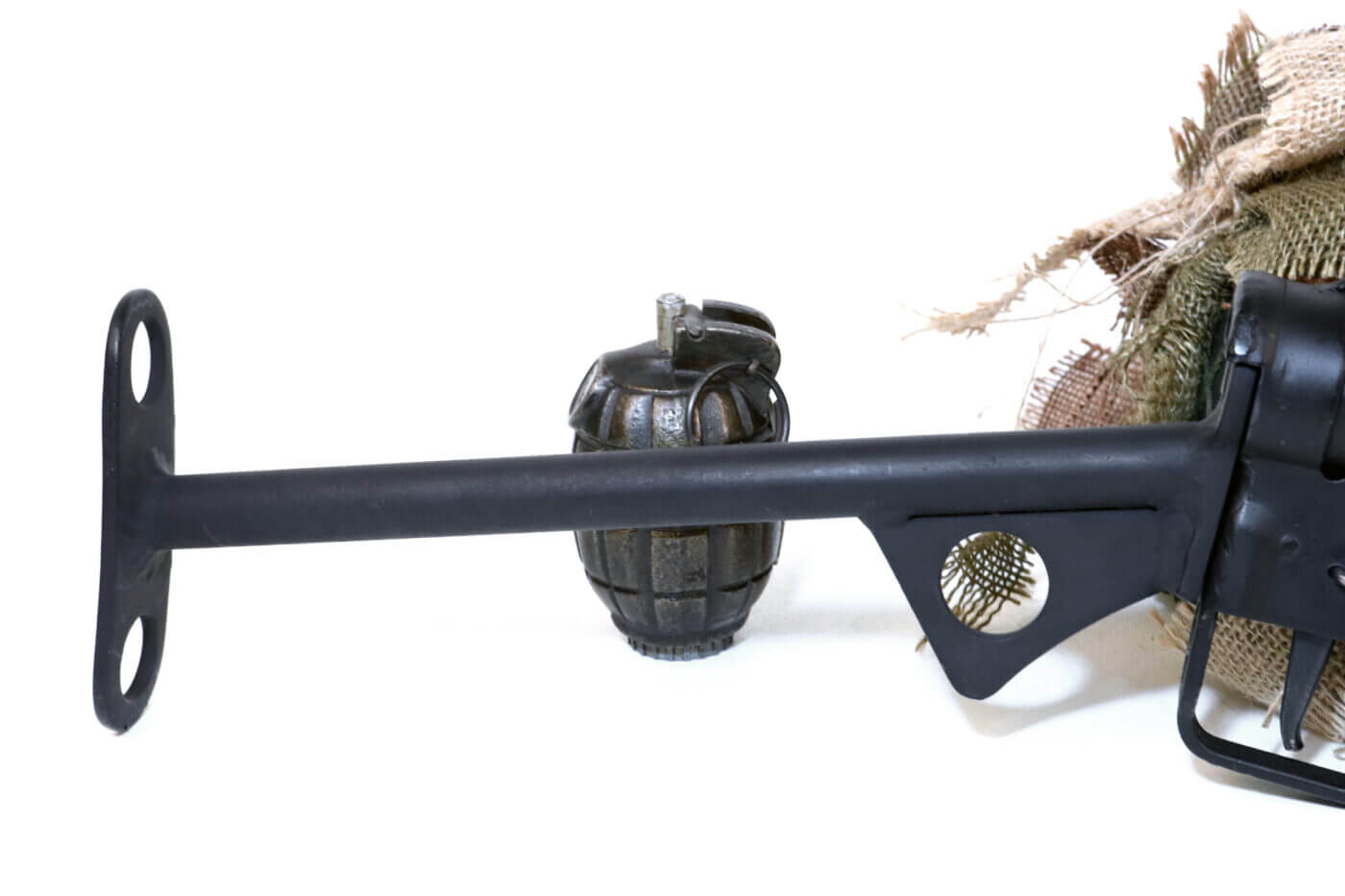
The simplest Sten machine gun stock was a ghastly tubular steel affair that was both uncomfortable and ungainly. The improved version consisted of a loop of pressed steel welded into a stock shape. The later Mk V included a relatively comfortable wooden buttstock and separate pistol grip along with a fenced sight and bayonet attachment.
Mk IIS and Mk VIS Sten submachine guns incorporated sound suppressors. These guns were intended for use by clandestine operatives and were breathtakingly advanced for their era. The famed German SS commando Otto Skorzeny purportedly fired off a magazine from a captured suppressed Sten on a busy Berlin street without anyone being the wiser.
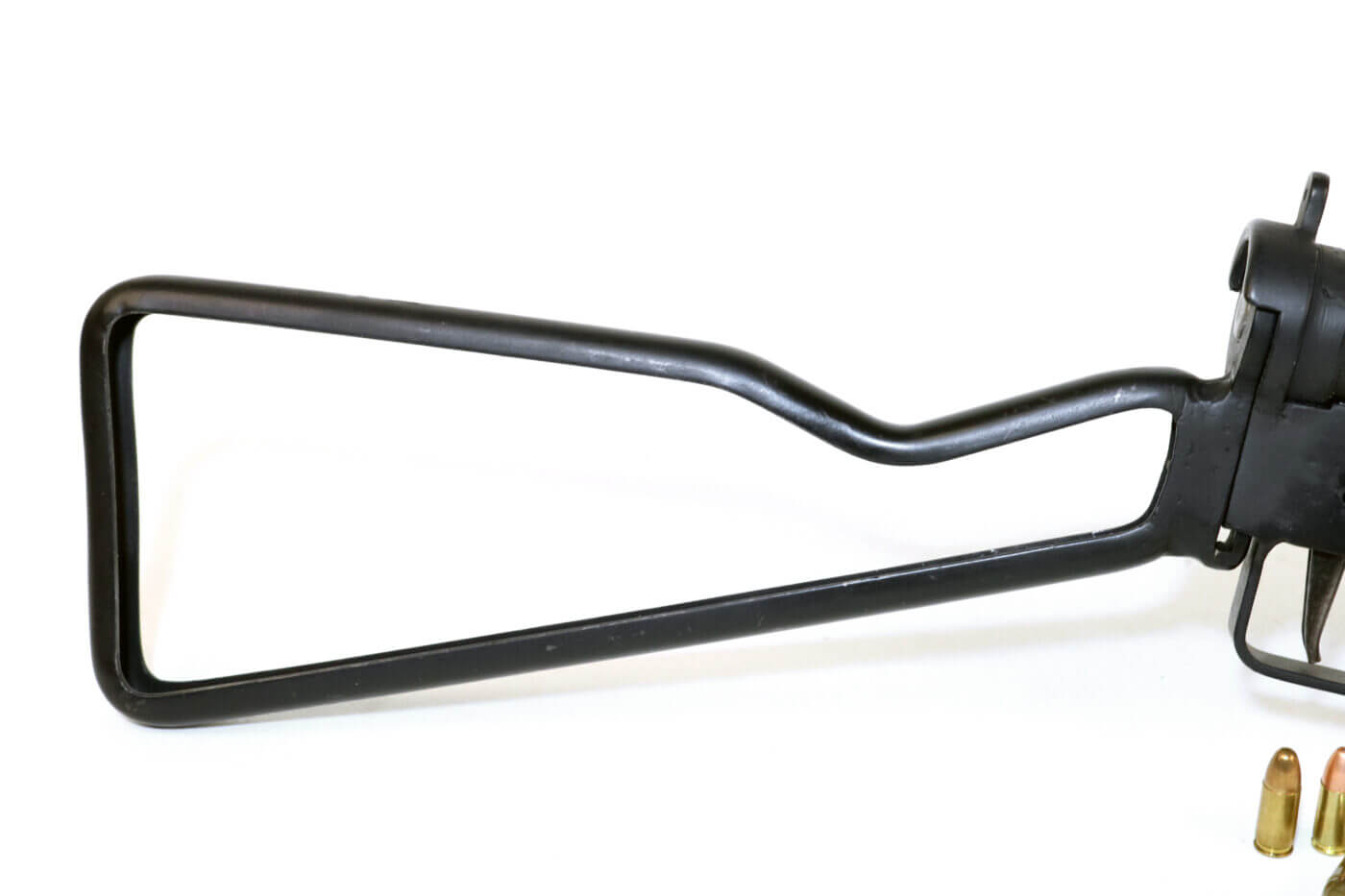
All Sten Marks were selective fire via a simple pushbutton on the fire control housing. The gun’s sole safety consisted of a slot cut into the receiver to secure the bolt to the rear. The gun was plagued by accidental discharges throughout its lengthy service as a result.
The Mk III was the cheapest of the lot and included a fixed non-removable barrel as well as a rigid magazine well. On the other Marks the operator could screw off the shroud and easily remove the barrel. Where most Sten receivers were formed from steel tubing drawn over a mandrel, that of the Mk III was folded from a sheet and welded along a top seam.
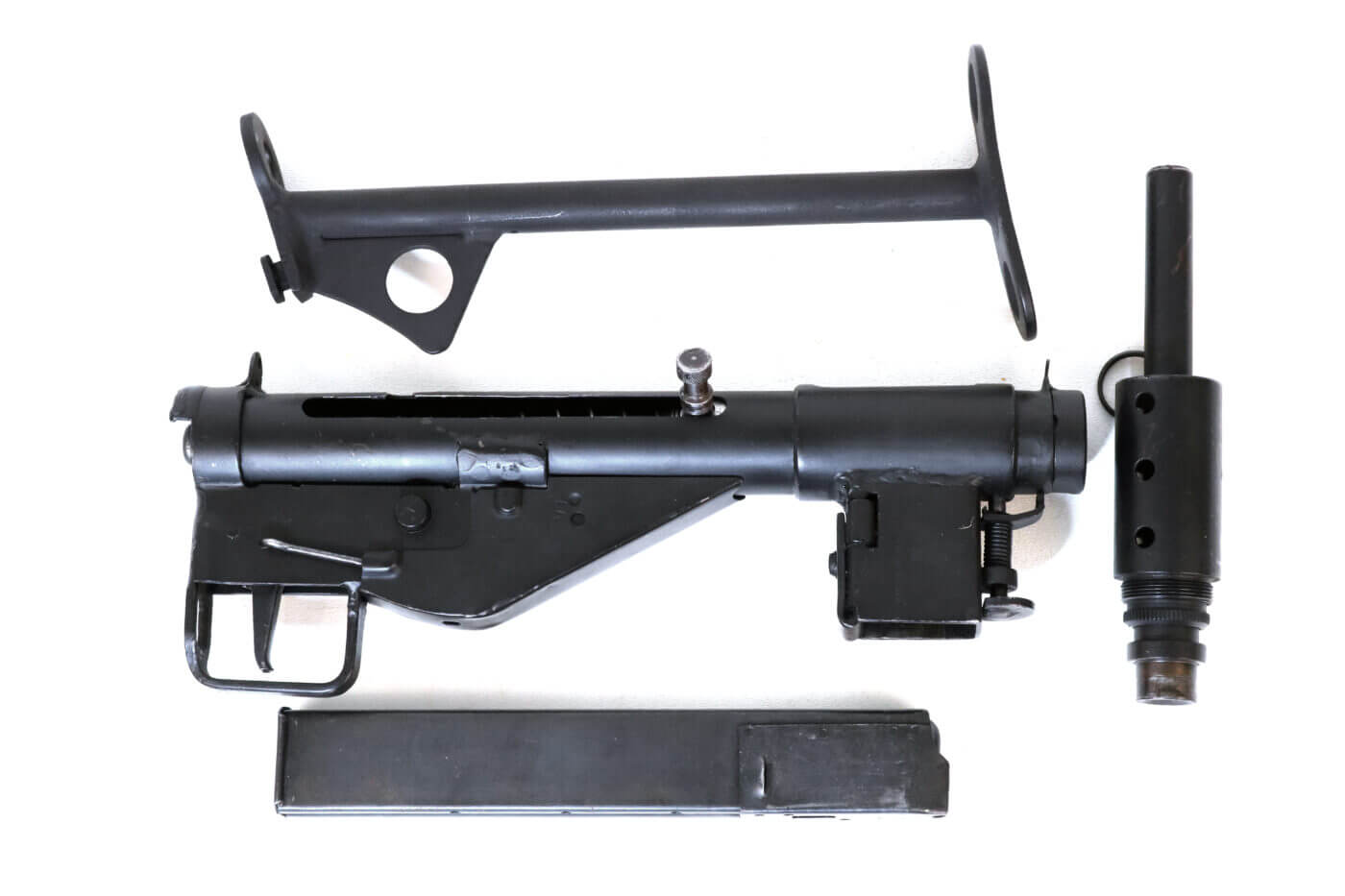
The Mk II Sten breaks down easily into four major components. The resulting concealability along with its low cost made the Sten an optimal weapon for distribution among resistance forces during WW2. An experienced operator could have a disassembled Sten in operation in under thirty seconds.
How Does She Run?
The Sten has been widely denigrated for its lack of mechanical couth, but this is really unfair. The Sten itself is actually a superb combat tool. The Sten’s magazine, however, is simply garbage.
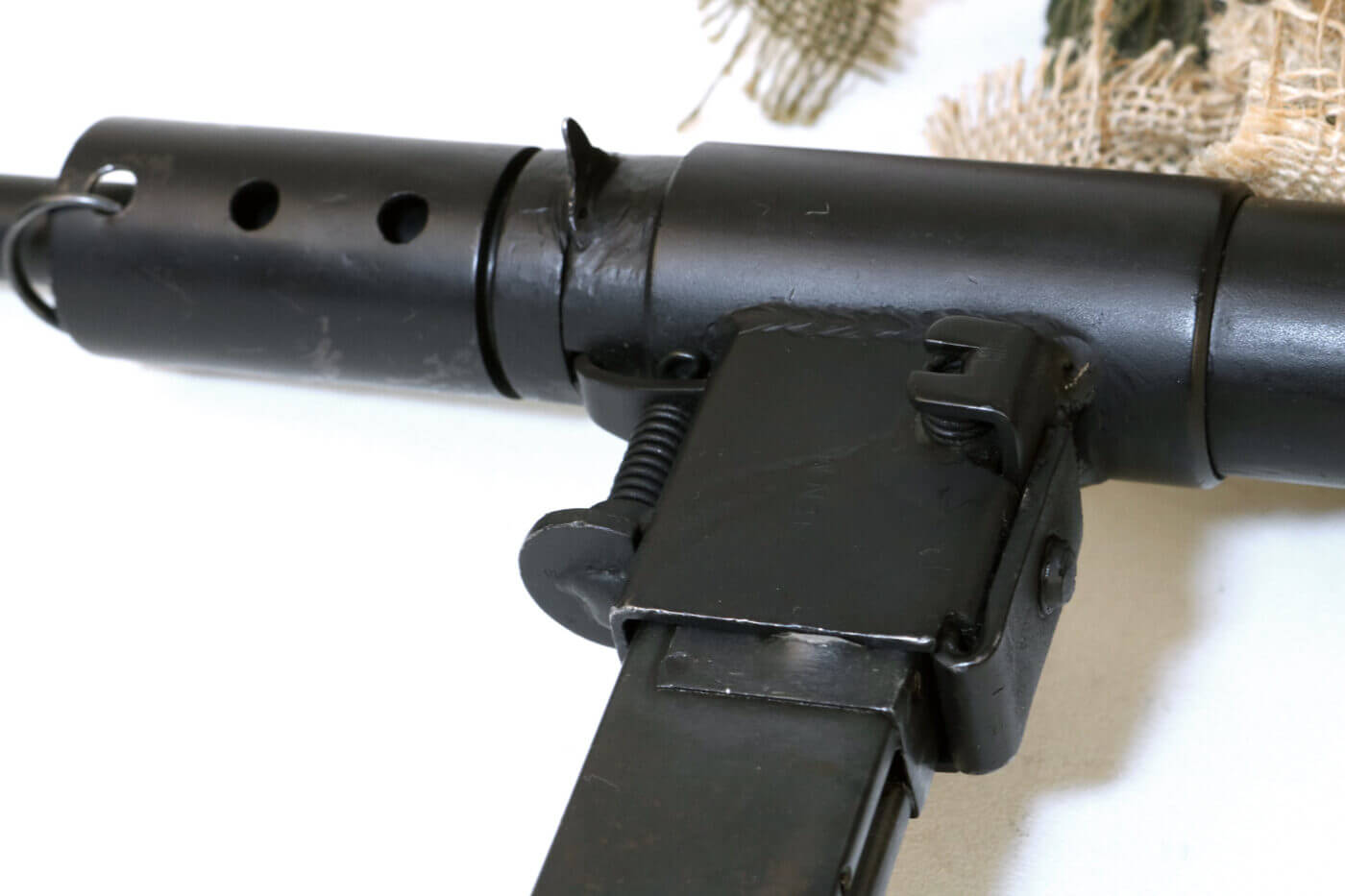
The double-column, single-feed magazine of the Sten SMG demands a dedicated loading tool and produces more mechanical friction than the comparable double column, double feed sort used on the Thompson or MP35. This extra constriction makes the magazine more susceptible to fouling in dirty environments. Most Sten stoppages can be traced to its rancid magazine.
The side-mounted magazine is an acquired taste, but this geometry allows easy operation from the prone. It also means that the gun does not have to fight gravity to feed its ammunition stack. The utilitarian raw steel of the stock is undeniably uncomfortable, but the weapon’s balance and rate of fire make it eminently controllable.
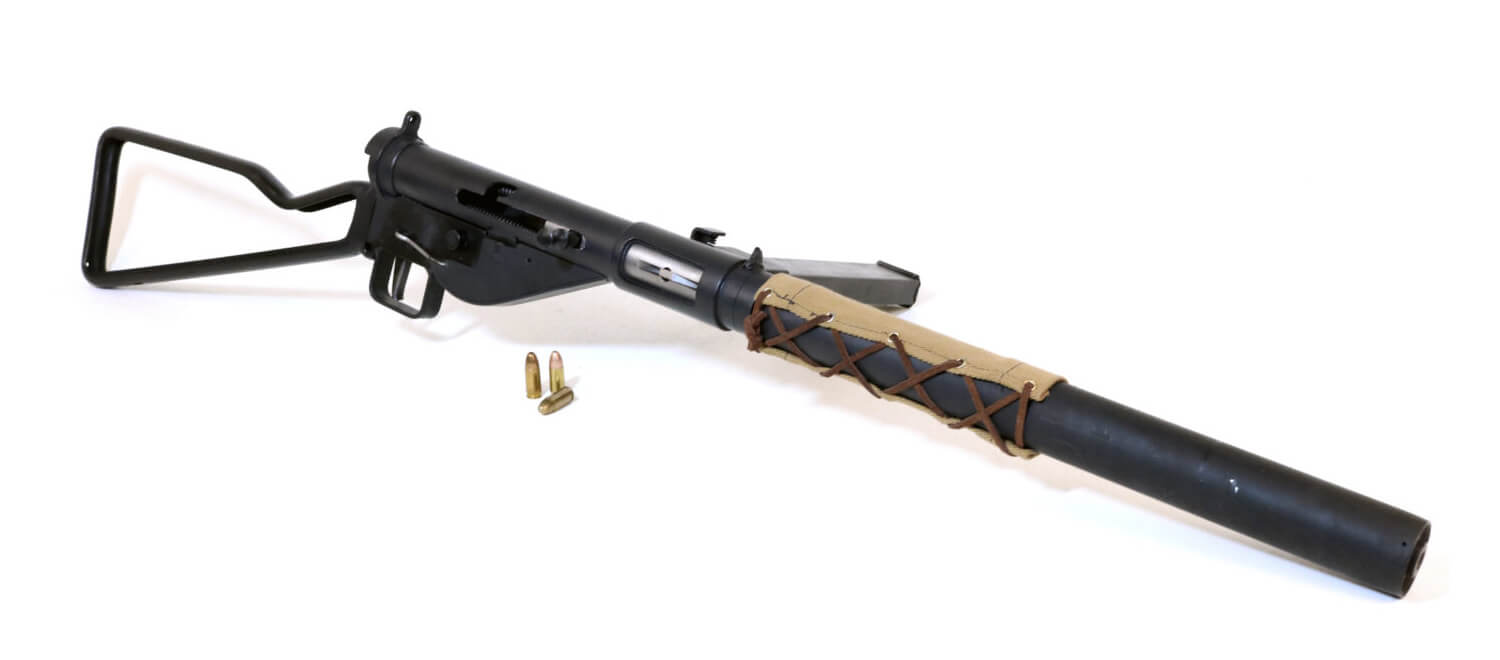
The Sten’s sights are crude, but a dirty little secret is that most SMG engagements in the real world do not involve the use of the sights at all. The Sten is a naturally pointable firearm. In the hands of a determined and disciplined operator the Sten was undeniably effective.
Denouement
The Sten was a stopgap. Cheap, effective, and easy to produce in breathtaking quantities using simple facilities, the Sten helped arm the British military at a most critical time in history. When British industry could finally catch its breath they swapped the Sten out for the Sterling, a similar but much more refined design. At a time when the entire world held its collective breath, however, the Sten helped preserve freedom and democracy in the face of the worst villains the world has ever known.